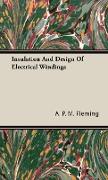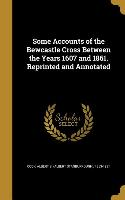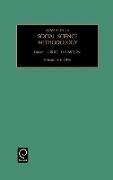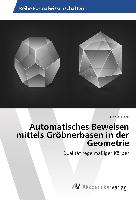- Start
- Insulation and Design of Electrical Windings
Insulation and Design of Electrical Windings
Angebote / Angebote:
INSULATION AND DESIGN OF ELECTRICAL WINDINGS by A. P. M. FLEMING. PREFACE: IT is generally recognised that insulation constitutes the most vulnerable part of electrical machinery, and manufacturers and users alike are confronted with the problem of how to ensure the maintenance of electrical service while dependent on materials known to be of an unreliable character. The extremely unmechanical nature and general unsuitability of the commercial insulating materials for withstanding the high temperatures and stresses occurring in service, has discouraged any wide-spread scientific investigations of directly practical application. As a result, therefore, insulation problems have in the past been solved largely by process of trial and error. The necessity for greater attention to these problems has been forced upon engineers by the advent of high voltages and larger and more costly units. Modern scientific research has thrown much light on the electrical behaviour of dielectrics, and much scattered data has been published dealing with the properties of insulating materials. This information, however, has not been available heretofore in a co-related form whereby it can be used as a fundamental basis for the practical insulation of electrical apparatus. In this treatise the authors have endeavoured to set forth the underlying principles and methods whereby the design of insulation can be carried out with precision, and have embodied the results of many years of practical experience in connection with insulating problems. Contents include: I. PHYSICAL CHARACTERISTICS OF DIELECTRICS 1 II. ELECTROSTATIC CONDITIONS IN PRACTICAL WORKING .... 37 III. INSULATING MATERIALS 51 IV. DESIGN OF INSULATION AND WINDINGS 116 V. INSULATION TESTS . 176 VI. THE DRYING AND HANDLING OF ELECTRICAL WINDINGS . . 198 VII. INSULATION FAILURES 214 INDEX 219. CHAPTER I: PHYSICAL CHARACTERISTICS OF DIELECTRICS. Introduction. In considering the physical characteristics of insu lating materials it is important to appreciate that all matter to some extent possesses the property of electrical conductivity, and that in this respect the difference between conductors and insulators is not so much one of kind as of degree. The exhaustive investigations of Sir J. J. Thompson and others show that the conductivity of gases is explained by the presence and motion of infinitely small electrically charged particles termed ions, which may be considered to consist of atoms or groups of atoms, or of very much smaller negatively charged particles known as electrons. Largely as a result of these investigations the electron theory has been developed, which has served to throw much light on the electrical behaviour of matter. In applying this theory to the study of electrical conductivity it is assumed that every atom has associated with it one or more detachable electrons whose aggregate negative charge is balanced by an equivalent positive charge on the atom, and that an ion possessing a definite positive or negative charge is formed by the addition of an electron to, or its removal from, one of these neutral atoms or combinations of atoms. If the cohesion between atoms and their electrons is overcome, the ions thus formed are free to move under the influence of an electric force, and when in motion in a definite direction constitute what is ordinarily termed an electric current, the magnitude of which is determined by the number of the ions and the velocity with which they move. The theory thus presents a mental picture of the conducting process which, in so far as it is at present understood, is the same for all matter, whether in a solid, liquid, or gaseous form...
Folgt in ca. 15 Arbeitstagen




